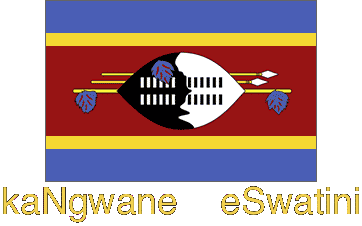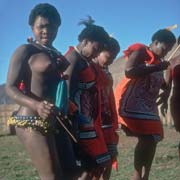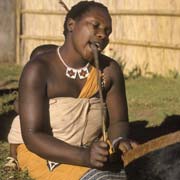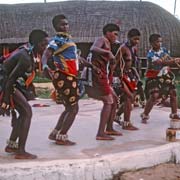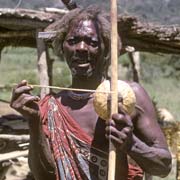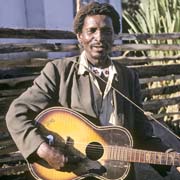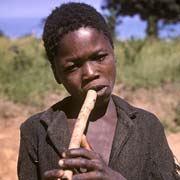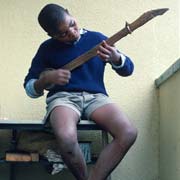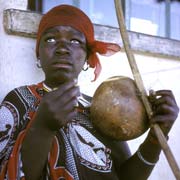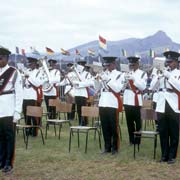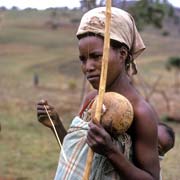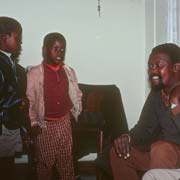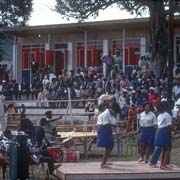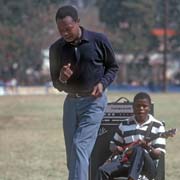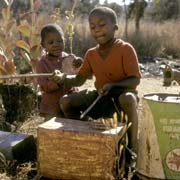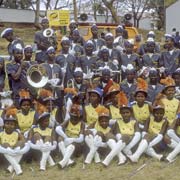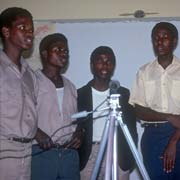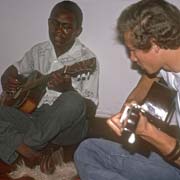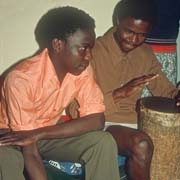Photos of Making music in Swaziland
Making music in Swaziland
Music is everywhere in Swaziland and of a great variety. Drumming and singing accompanies the traditional "Sibhaca" dances performed by young men and the ceremonies of the traditional healers ("tangoma"). Both adults and children play music spontaneously and take great pleasure in it.
you may then send it as a postcard if you wish.
There are lots of examples of songs by both men and women, accompanying themselves by drumming or instruments like the "Makhweyane", a one-stringed bow with a calabash as a sound box. The one metal string is tapped with a reed, the pitch can be changed by bending the bow and the calabash is moved away or towards the body, changing the quality of the sound.
Children may improvise drum sets from empty tins or may make a little guitar from a piece of wood, a tin can and fishing line for string. Herd boys, looking after their father's cattle, may carve "emavenge", flutes, that they play to while the time away. But "European" styles are also very popular: schools may have bands, complete with drum-majorettes and also the Royal Swaziland Police has a very smart looking band that plays at official functions.
The most popular music on the radio in Swaziland in the seventies was called "Mgqashiyo" or "Mbaqanga", also called "African Jive" with bands from South Africa. The most famous group was undoubtedly Mahlatini and the Mahotella Queens, (also known as Mahlathini Nezintombi Zomgqashiyo), with its lead singer Simon 'Mahlathini' Nkabinde (1938 - 1999), the famous South African mbaqanga singer. Known as the "Lion of Soweto", Nkabinde was famous for his deep-voiced, basso profundo "groaning" style that came to symbolise mbaqanga music in those days. He performed with the Mahotella Queens at the show grounds in Manzini, as part of the festivities around Swaziland's five years of independence.


